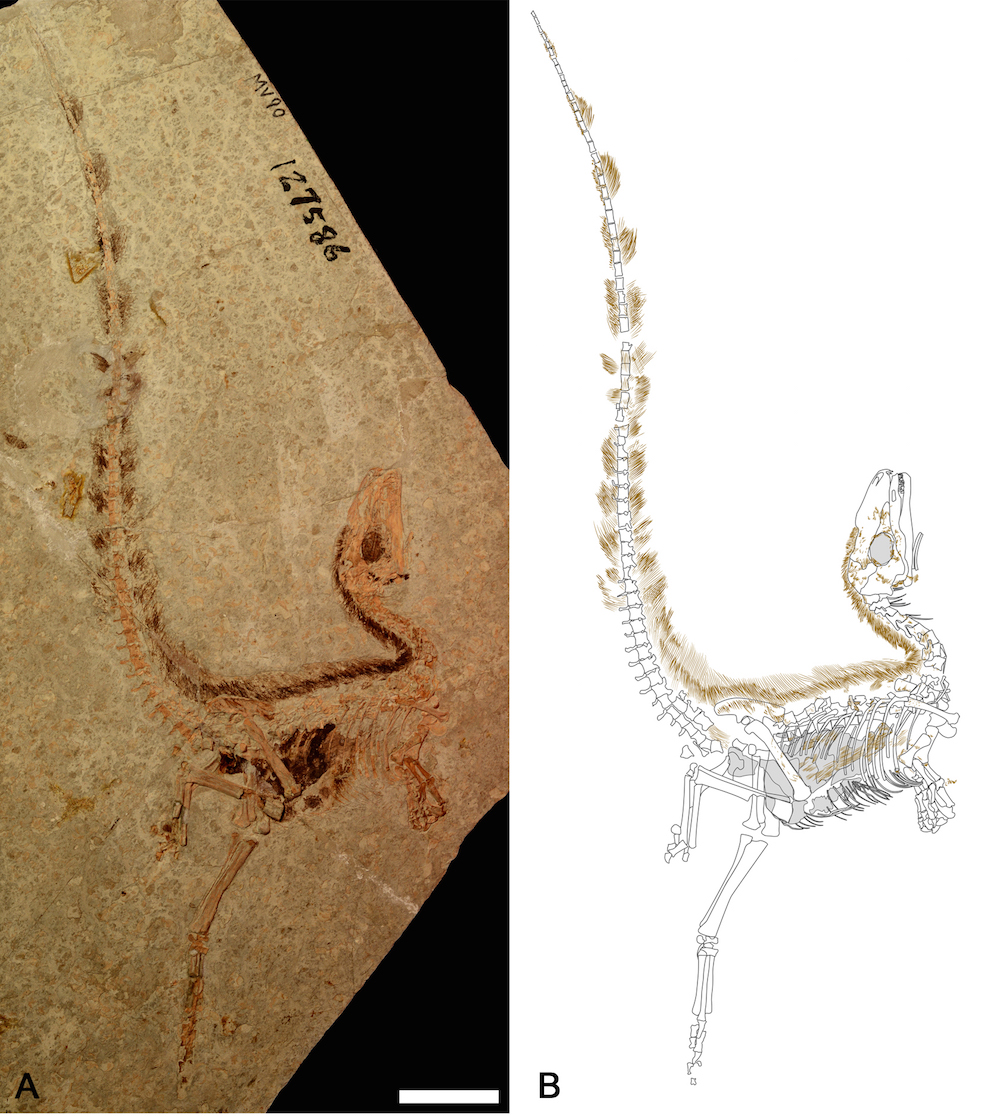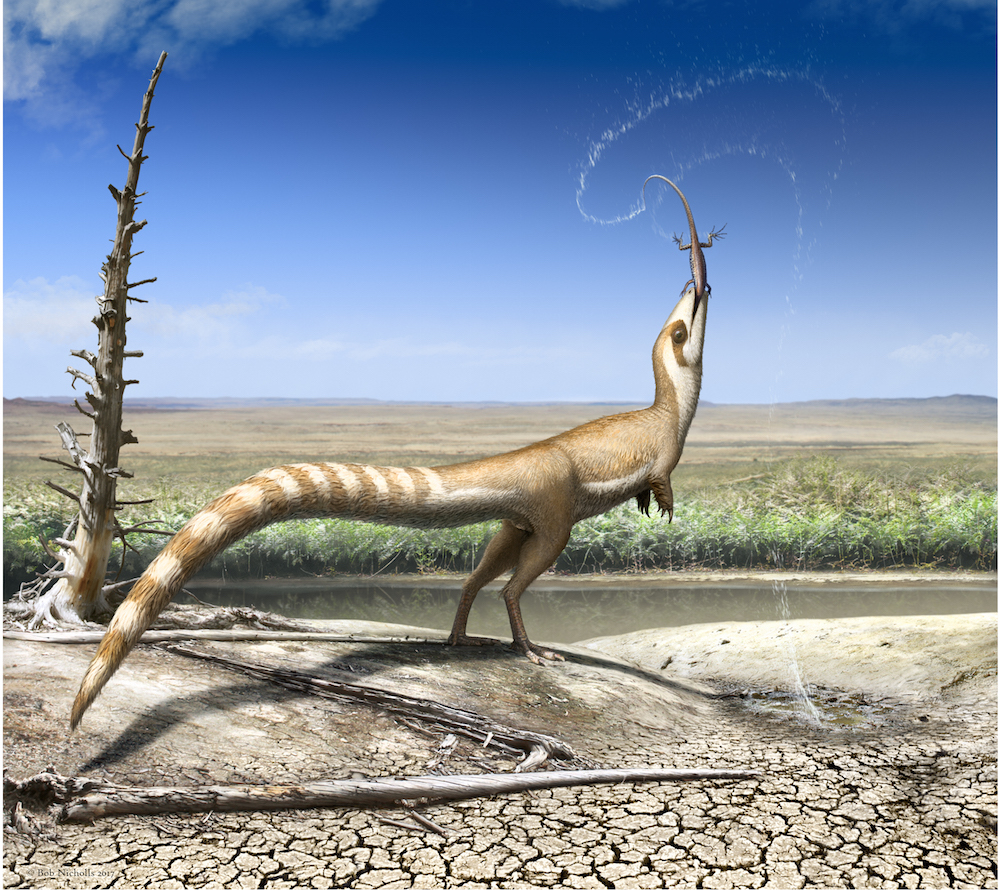Dinosaur with Raccoon-Like Mask Hid in Broad Daylight
New research on Sinosauropteryx's coloring reveals that the feathered dinosaur sported not only a raccoon-like face mask, but also striped patterns and countershading — that is, a dark back and light belly. Animals still use that trait today to stay camouflaged from predators and prey, the researchers said.
"Far from all being the lumbering prehistoric gray beasts of past children's books, at least some dinosaurs showed sophisticated color patterns to hide from and confuse predators, just like today's animals," study lead researcher Fiann Smithwick, a graduate study of geology at the University of Bristol in the United Kingdom, said in a statement. [Photos: This Plant-Eating Dinosaur Had Spikes, Armor and Camouflage]
To decipher Sinosauropteryx's coloring, researchers studied well-preserved fossils of the small theropod (a bipedal, meat-eating dinosaur) found in the Jehol Biota of China. The scientists' work revealed that the Cretaceous-age dinosaur had dark-colored feathers on different parts of its body, including a striped tail, the researchers said.

Sinosauropteryx's countershading would have helped it stay incognito even on a sunny day. Here's how it works: During the daytime, the sun illuminates the top of an animal's body and casts shadows on its underside. This effect helps animals (including humans) see objects as three-dimensional.
"In counter-shaded animals, the top surface is darker and the lower surface is lighter," the researchers said in a video. "This evens out the effect of shadowing, so counter-shaded animals appear less three-dimensional," a benefit that helps these animals avoid predators and stalk prey, the researchers said.

Countershading also provides researchers clues about an animal's habitat. Creatures like Sinosauropteryx, with dramatic countershading that starts high up on their bodies, tend to live in open environments with little vegetation, such as savannas. Animals with more-subtle countershading that starts lower on the body tend to live in covered areas, such as forests, the researchers said.
The study was published online today (Oct. 26) in the journal Current Biology.
Sign up for the Live Science daily newsletter now
Get the world’s most fascinating discoveries delivered straight to your inbox.
Original article on Live Science.

Laura is the archaeology and Life's Little Mysteries editor at Live Science. She also reports on general science, including paleontology. Her work has appeared in The New York Times, Scholastic, Popular Science and Spectrum, a site on autism research. She has won multiple awards from the Society of Professional Journalists and the Washington Newspaper Publishers Association for her reporting at a weekly newspaper near Seattle. Laura holds a bachelor's degree in English literature and psychology from Washington University in St. Louis and a master's degree in science writing from NYU.










